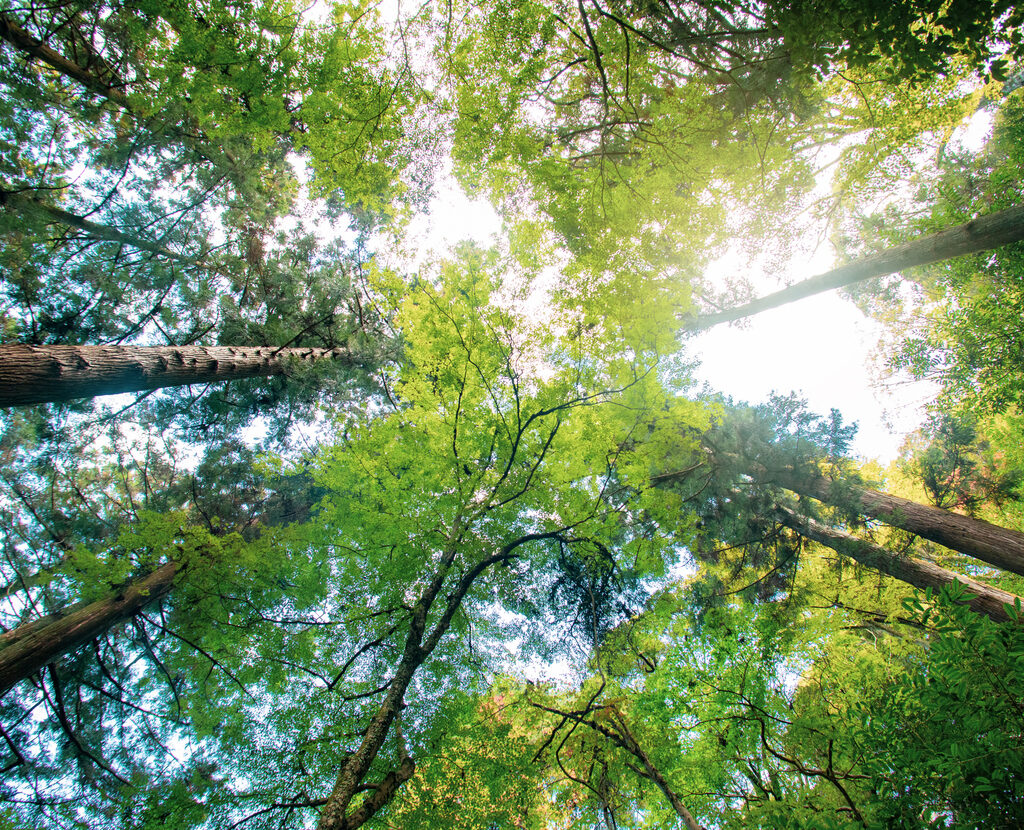Review: The Power of Trees, Peter Wohlleben, Black Inc
Elderflora, Jared Farmer, Picador
Caring for forests entails the challenging task of thinking beyond human perspectives on time, the authors of these two books suggest.
Peter Wohlleben’s latest book has more than his others about German forestry policy, but it is relevant for wider audiences, nonetheless. Like hardline oil producers, he suggests, the forest industry is loathe to change destructive practices. In Germany, forest agencies convince people that plantations are good (too), but they are clearly not: bare soil releases carbon, trees need the ‘family’ of the forest to be healthy. The carbon in plantation wood gets into the atmosphere quickly – plantation trees are burned or made into cheap furniture or paper that don’t last long. Plantations don’t store water well and don’t transpire the same. They are susceptible to disease and pests that can fell whole plantations before ‘harvest’.
The main problem is that short-term thinking is applied to forests, whereas they are complex ecosystems and long-lived beings, with benefits to all if they are left alone.
In an old forest, humus builds up on the forest floor, storing carbon. Big, old trees store a lot of carbon under them in the soil. (You can observe this yourself: walk through an old-growth forest and observe how good the soil is. Plantations, on the other hand, feature barren soil.) The trees are healthier because of their relationships. In The Hidden Life of Trees Wohlleben wrote about this world of interconnections – the so-called ‘wood wide web’. Here he relates more interesting facts.
There is evidence that trees of the same species make space for each other, as opposed to simple competition between species. Older trees ‘teach’ younger trees conservation measures. Old forests encourage rain – transpiration makes changes in air pressure, which brings in more rain and cools the land. Satellite thermal images show cooler temperatures over old forests. (It is not the same for plantations.) Alternatively, cut down trees, and less carbon is stored, there is less cooling, the atmosphere warms, this is less conducive to trees, and we have a downward spiral.
So, old trees are good. And there are plenty of old trees left, but perhaps not enough. We have a history of caring for old trees, but also a history of not being able to leave them alone, and killing them in the name of curiosity, science or just plain greed. And the long timeframes some trees exist in just seems at odds with human timeframes. Jared Farmer’s book, a forest of information with a moral point, is about this problem.
The oldest trees seem to be the American bristlecones (the oldest being a mindboggling four to five millennia old, though it’s sometimes hard to tell as the wood can be so old it is eroded by the wind). Discovered in the 1950s, they grow in harsh conditions on mountains in the western United States. Because of the conditions, they grew incredibly slowly. Rather than thriving, Farmer suggests they are good at putting off the inevitable for a very long time.
One of the earliest scientists to recognise their significance, Edmund Schulman, realised the links between age and adversity (as opposed to thinking the oldest trees must be the biggest). Even though he guessed they were incredibly old, he ‘sacrificed’ one for science, cutting it down to count the rings, which, it had been realised, could help map and predict cycles of drought. In 1964 a graduate student did the same thing, after being unable to take a core sample. In doing so he attracted ire for killing a 5000-year-old tree. His excuse: there were plenty of them.
The barren location of the bristlecones has (mostly) protected them from the predations of humans. There are also millennia-old cypresses, junipers and pines surviving where agriculture (or forestry) is not possible. Looking unremarkable helps too. (American) New England black gum is not valued by foresters but can live up to 1000 years. These species’ ability to fly under the radar, though, means they can be destroyed by development before anyone notices their significance.
For more prominent trees, humans are blessing and curse, protecting trees, yes, but usually after initial destruction has rung alarm bells with those conservation minded. Sequoias are American national treasures, but the stories are heartbreaking. Loggers felled hundreds, to not even make a profit in the end. Not content with photos, entrepreneurs killed the biggest, cut sections and peeled off the bark, reassembling them as attractions at fairs to show the size of the (now dead) trees. In the late 1800s one collector hired a ‘timber expert’ to find him the biggest tree outside the national park. A cross section was too big for a train – it was cut up for reassembly, supposedly for science. It seems there is a persistent, post-Enlightenment utilitarian mindset that says, ‘We’ve found the oldest, biggest living thing! Great! Let’s kill it!’ Some were incensed at this ‘murder’; sequoias would become protected. But now climate change threatens.
Elsewhere around the Pacific rim, there are similar stories of colonial destruction. In Taiwan, Chinese fleeing the cultural revolution ‘managed’ old growth forests by cutting them down. In South and Central America massive and long-lived cypresses, like yews in English churchyards, were revered and preserved. That is, until the twin stresses of Spanish conquest and population rise, which has depleted underground reservoirs vital for the trees’ survival. In New Zealand, kauris were logged to the brink. The British saw the astonishing groves and envisaged English pastures. Kauris are rot-resistant; in recent years millennia-old ‘corpses’ buried underground have been ‘mined’. Remaining live kauris are treated reverently. Security cameras show tourists jumping fences to hug them – this is not helpful, as tourists can bring in pathogens that can kill the trees.
Part of the human perspective is to see individual trees. But the dating of the oldest trees is complicated by the existence of naturally cloned groups, like quaking aspens, that blur the line between individuals and groups. They reproduce both sexually and asexually through runners. At a guess, one cloned stand is 80,000 years old. But what exactly is being dated is not entirely clear.
Thinking about old trees, Farmer writes, gets us away from ‘zoocentric’ thinking. If we think about the history of animals, we might think of extinctions, but he notes that the history of plants is as much about persistence. That’s not to say the old trees will simply be fine in future. The future is tricky. The trees fare well generally if left alone, but the continuation of current human practices means disaster for many. We are changing things too quickly. Forests will change too – some will benefit even, but old trees need some stability. Keeping old forests helps ameliorate warming, so there is a clear logic here: it is good to protect old trees now, so that we can keep them in future.
Nick Mattiske blogs on books at coburgreviewofbooks.wordpress.com and is the illustrator of Thoughts That Feel So Big.














